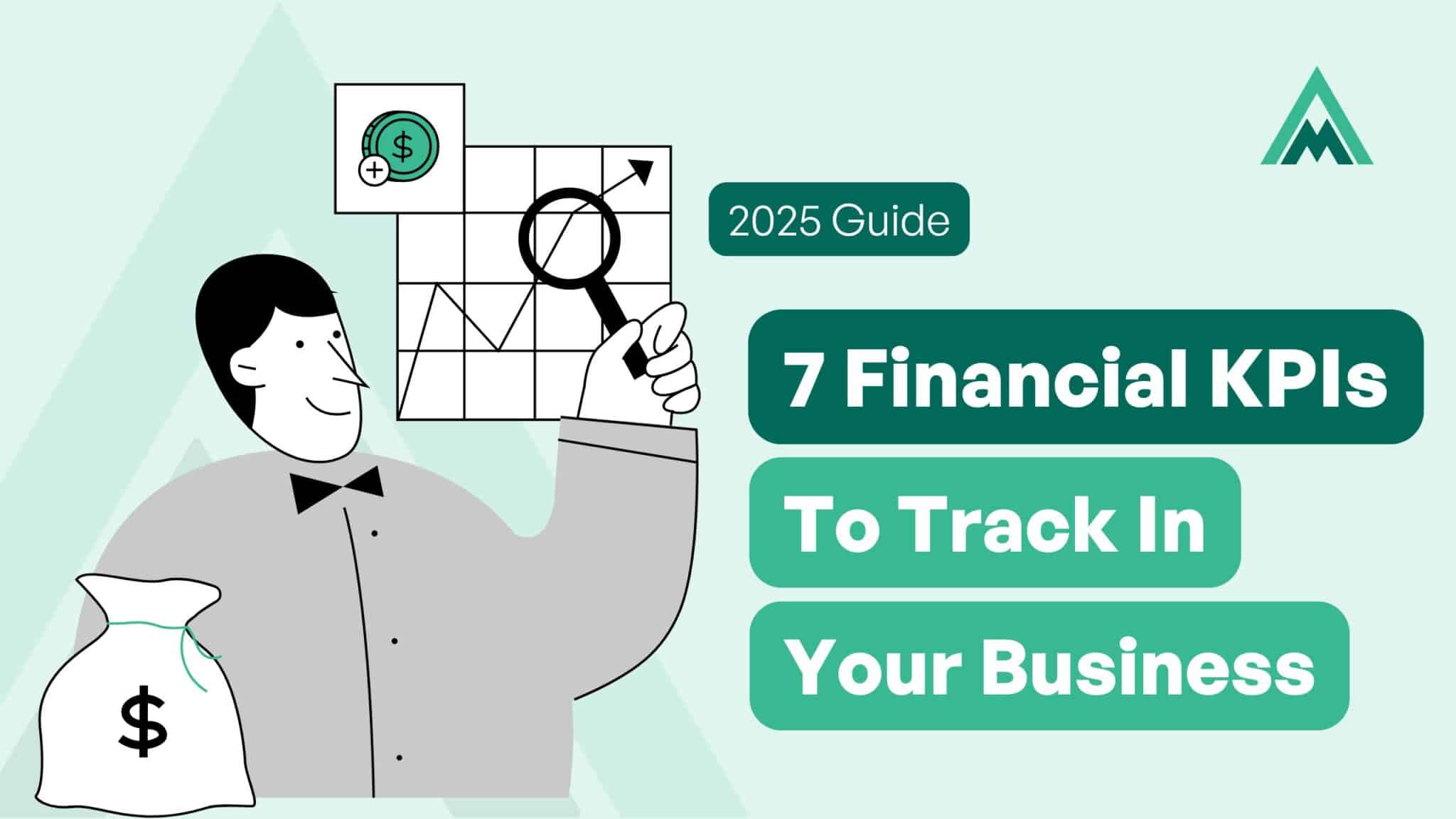Running a service business in Denver—whether it’s marketing, IT consulting, healthcare, legal services, or any other professional service—means juggling a lot. You’re keeping clients happy, managing employees, handling operations, and, of course, trying to stay profitable.
But without tracking the right financial metrics, it’s easy to lose sight of where your business actually stands.
That’s where financial KPIs for service businesses come in.
KPIs or Key Performance Indicators are like a dashboard for your business finances. They help you spot problems early, make smarter decisions, and ultimately keep your business running smoothly.
The trick is knowing which ones actually matter.
Here are seven financial KPIs we recommend every Denver service business should keep an eye on in 2025.
1. Accounts Receivable Turnover (aka How Fast You Get Paid)
Getting paid on time is one of the biggest challenges for service businesses. You send an invoice, and then… crickets. The longer clients take to pay, the tighter your cash flow gets. That’s why you need to track your Accounts Receivable Turnover, which tells you how quickly your business collects payments.
A higher turnover means clients are paying faster, which keeps your cash flow strong.
A lower turnover? That’s a sign that too much money is tied up in unpaid invoices.
How to calculate it:
Accounts Receivable Turnover =
Net Credit Sales / Average Accounts Receivable
If you notice your turnover slowing down, consider tightening up payment terms, sending reminders, or offering small discounts for early payments.
2. Customer Acquisition Cost (aka What It Costs to Get a New Client)
Bringing in new clients is great, but not if you’re spending more on marketing and sales than you’re making back. Customer Acquisition Cost (CAC) helps you figure out if your marketing efforts are actually paying off.
How to calculate it:
CAC =
Total Marketing and Sales Expenses / Number of New Customers Acquired
If your CAC is too high, you might need to refine your strategy. Maybe your ads aren’t targeting the right people, or your sales process needs streamlining. Cutting wasteful spending here means more profit in your pocket.
3. Gross Profit Margin (aka How Much Money You Actually Keep)
At the end of the day, it’s not just about revenue—it’s about how much of that revenue you actually keep. Gross Profit Margin shows how efficiently you’re managing costs related to delivering your service.
How to calculate it:
Gross Profit Margin =
(Revenue – Cost of Goods Sold) / Revenue × 100
A higher margin means you’re keeping more money from each dollar earned. If your margin is shrinking, take a closer look at where costs are creeping up—whether it’s payroll, software subscriptions, or materials—and find ways to bring them down.
4. Revenue Concentration (aka Are You Too Dependent on One Client?)
If most of your revenue is coming from just one or two big clients, your business is at risk. If one of them suddenly leaves, it could put you in a tough spot. Revenue Concentration helps you measure how dependent you are on just a few customers.
A more balanced client base gives your business stability. If you notice you’re overly reliant on one client, it might be time to diversify—whether that means expanding into new markets, adding services, or working on client retention.
5. Sales Growth Rate (aka Is Your Business Actually Growing?)
Your Sales Growth Rate tells you whether your business is moving in the right direction. Slow or negative growth could mean you need to adjust pricing, marketing, or service offerings.
How to calculate it:
Sales Growth Rate =
(Current Period Sales – Previous Period Sales) / Previous Period Sales × 100
Steady, predictable growth is the goal. If your sales are stalling, take a closer look at industry trends and client feedback to figure out what’s holding you back.
6. Working Capital (aka Do You Have Enough to Cover Your Bills?)
This is a fancy way of saying: Do you have enough money to cover your short-term expenses? Working Capital is what’s left after you subtract what you owe from what you have.
How to calculate it:
Working Capital = Current Assets – Current Liabilities
A positive number means you’re in good shape. A negative number means you might struggle to cover payroll, rent, or other expenses. If cash is getting tight, consider speeding up invoicing, negotiating better payment terms, or cutting unnecessary costs.
7. Net Profit Margin (aka The Number That Actually Matters)
At the end of the day, your Net Profit Margin is what really matters. It tells you how much of every dollar earned is actually making it to your bank account after covering all expenses.
How to calculate it:
Net Profit Margin = (Net Profit / Revenue) × 100
If your net margin is shrinking, it’s time to dig into your expenses, reassess pricing, and find ways to improve efficiency. The higher your net margin, the more financial cushion you have to reinvest in growth.
Need Help Tracking KPIs For Your Service Business?
When it comes to service business KPIs, tracking them doesn’t have to be complicated.
Even a simple monthly review can help you catch potential problems early, make smarter financial decisions, and set your business up for long-term success.
At Mahoney CPA, this is what we do.
We help service businesses in Denver track the right financial metrics, improve cash flow, and stay on top of their numbers—so they can focus on running and growing their business.
If you’re wondering whether your business is on track or need help making sense of your financials, get in touch with us today.
Simply head over to our Contact page to get started. We’re always here to help.
Until next time!



